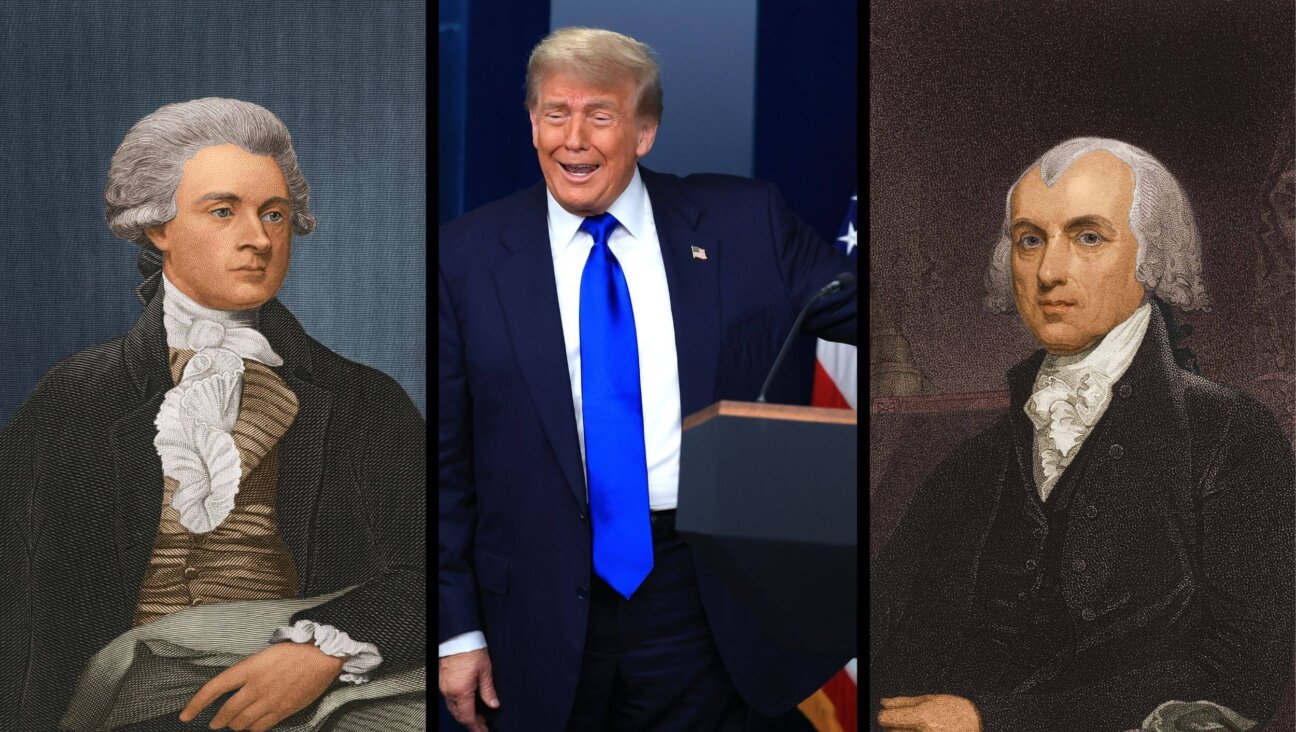For the Separation of Menorah and State

White House Hanukkah: Instead of a menorah, a dreidel should appear as a symbol of the holiday on state property. Image by Kurt Hoffman
Each holiday season, the constitutionality of the menorah and other religious holiday displays on government property engenders fierce debates — in traditional courtrooms and in the court of public opinion.
In deciding whether a public display of a menorah outside a government building violated the Establishment Clause of the First Amendment, the U.S. Supreme Court, in Allegheny v. ACLU (1989), stated that the menorah in the context of a holiday display depicting a star and crescent and Christmas tree has a secular message of cultural diversity and therefore is not an endorsement of any particular religion.
Although Hanukkah has a universal secular message of religious freedom, the menorah is an inherently religious symbol with religious significance. The menorah lighting was a rite in the ancient Temple. The menorah commemorates a supernatural event in which one days’ worth of oil burned for eight days. The menorah is used in conjunction with prayers that invoke God. Prayers, miracles and temple rites are all inherently religious. No one recites blessings over a Christmas tree or a star and crescent, so why would the Supreme Court classify a menorah as secular?
In the decision, Justice Blackmun conceded that the menorah has religious meaning but nonetheless, “its display reveals no endorsement of religion because no other symbol could have been used to represent the secular aspects of the holiday of Hanukkah without mocking its celebration.” While it’s certainly true that Hanukkah is associated with the menorah, it is also strongly associated with the four-sided spinning top known as the dreidel.
The dreidel is a commonly recognized symbol of the holiday. It even has a song associated with its use: “Oh, dreidel, dreidel, dreidel, I made it out of clay.” According to tradition, the ancient Jews used the dreidel to play games when they heard the Greek-Hellenist approaching. This way they wouldn’t be caught studying Torah, which was outlawed by the oppressive Greek king, Antiochus. Unlike the menorah, the dreidel was not used in the temple. There are no blessings recited over its use. It is not associated with anything supernatural or religious.
A public display of a dreidel should avoid perceived government endorsement of religion because of its secular origins and use. Dreidels are prominently displayed in many parts of the country. The Brooklyn Children’s Museum, located in Crown Heights, has an enormous dreidel displayed with Hebrew letters, making it clear to any passerby that it is associated with the Jewish holiday of Hanukkah. Why not display the dreidel as an alternative to the inherently religious symbol of the menorah?
Besides circumventing the First Amendment, the secularization of the menorah does a grave disservice to the Jewish tradition. Hasidic philosophy teaches that the Greek-Hellenists appreciated studying Judaism as a rational discipline, but specifically fought against the traditions that were supernatural and irrational in nature. Taking a symbol like the menorah, which represents that struggle of adhering to faith in the face of an oppressive Greek culture that believed everything should be secular and rational, and redefining it as having secular connotations contradicts what the menorah represents.
There is nothing wrong with public displays of the menorah. Expressing ones beliefs publicly is every citizen’s right, but, in some contexts, a display of a menorah on government property is tantamount to the state endorsing a strictly religious symbol.
Hanukkah represents religious freedom of the individual, but an equal counterpart to that is preventing the government from endorsing and imposing religion as this poses a threat to all faiths. When a display of a menorah is unconstitutional, spinning and displaying a public dreidel would help ensure the important division between church and state.
Eliyahu Federman served as an executive editor of the City University of New York’s law review and contributes regularly to The Huffington Post, the Algemeiner Journal and The Jerusalem Post.






















